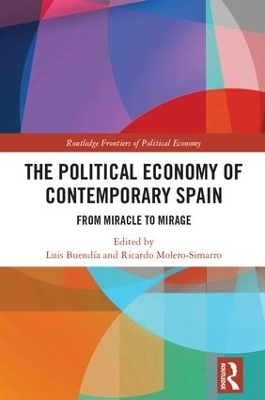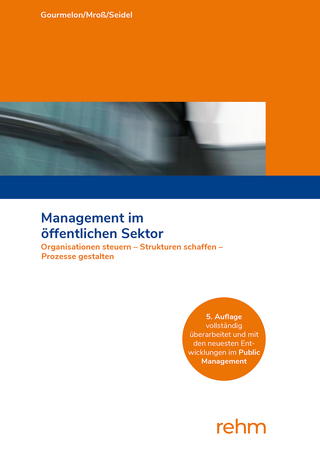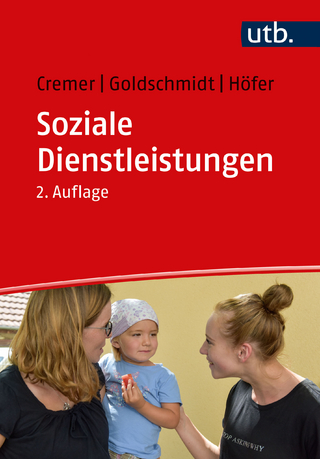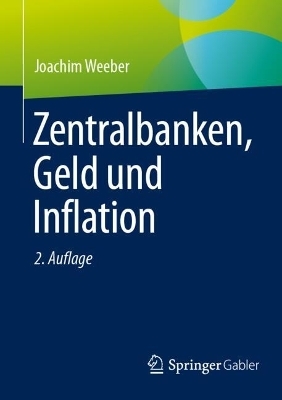
The Political Economy of Contemporary Spain
Routledge (Verlag)
978-1-138-30571-7 (ISBN)
Analyzing the causes and consequences of the continuing economic crisis in Spain, this book delves into five analytical axes: the evolution of the growth model; the role of Spain in the international division of labor; the financial sector and its influence on the rest of the economy; changes in the labor market; and the distributional consequences of both the expansive phase and the later crisis. Furthermore, contributors examine the formation of a triangle of actors (the government sector, building sector, and financial capital) that shaped the Spanish growth model, together with the effects of Spain’s membership in the Economic and Monetary Union. Also considering ecological problems, gender issues, and the immigration question, this book challenges the alleged recovery of living conditions during recent years, as well as the explanation of the crisis as the result of irrational behaviors or the greedy nature of certain actors.
The Political Economy of Contemporary Spain provides a coherent explanation of the Spanish economic crisis based on a pluralistic approach, while proposing several measures that could contribute to a transformation of Spain’s economic and social models.
Luis Buendía is Assistant Professor of Public Economics and Political Economy at the University of León, Spain. Since 2014, he has taken part in a project on the crisis in Southern Europe, financed by the Sheffield Political Economy Research Institute, and he has also been a member of the Steering Committee of the Asociación de Economía Crítica (Critical Economics Association). Ricardo Molero-Simarro is Honorary Fellow at the Department of Applied Economics I (International Economics and Development) of the Complutense University of Madrid, Spain. He has also been a researcher at the School of Oriental and African Studies, UK, and the Peking University, China. His lines of research include aspects of income inequality, as well as monetary systems. In 2014, he was invited as a speaker to the Labour Economics after the Crisis Conference organized by the European Commission.
List of Figures and Tables, List of Contributors, Introduction: The Political Economy of the Spanish Growth Model and its Structural Adjustment Process, Luis Buendía and Ricardo Molero-Simarro. Chapter 1. The accumulation model of the Spanish economy: profitability, the real estate bubble and sectoral imbalances, Juan Pablo Mateo and Miguel Montanyà. Chapter 2. Spain’s external insertion: peripheral or not?, Manuel Gracia and María José Paz. Chapter 3. The Spanish financial sector: debt crisis and bailout, Eduardo Garzón Espinosa, Bibiana Medialdea García and Antonio Sanabria Martín. Chapter 4. The Spanish Labor Market. On the path of flexibility and wage devaluation, María Eugenia Ruiz-Gálvez and Lucía Vicent Valverde. Chapter 5. The distributive pattern of the Spanish economy: the impact of adjustment on inequalities, Luis Buendía, Ricardo Molero-Simarro and Javier Murillo Arroyo. Conclusion, Luis Buendía and Ricardo Molero-Simarro. Index
| Erscheinungsdatum | 16.03.2018 |
|---|---|
| Reihe/Serie | Routledge Frontiers of Political Economy |
| Zusatzinfo | 15 Tables, black and white; 31 Line drawings, black and white; 31 Illustrations, black and white |
| Verlagsort | London |
| Sprache | englisch |
| Maße | 156 x 234 mm |
| Gewicht | 385 g |
| Themenwelt | Sozialwissenschaften ► Politik / Verwaltung ► Staat / Verwaltung |
| Wirtschaft ► Volkswirtschaftslehre ► Finanzwissenschaft | |
| Wirtschaft ► Volkswirtschaftslehre ► Makroökonomie | |
| Wirtschaft ► Volkswirtschaftslehre ► Wirtschaftspolitik | |
| ISBN-10 | 1-138-30571-5 / 1138305715 |
| ISBN-13 | 978-1-138-30571-7 / 9781138305717 |
| Zustand | Neuware |
| Haben Sie eine Frage zum Produkt? |
aus dem Bereich


